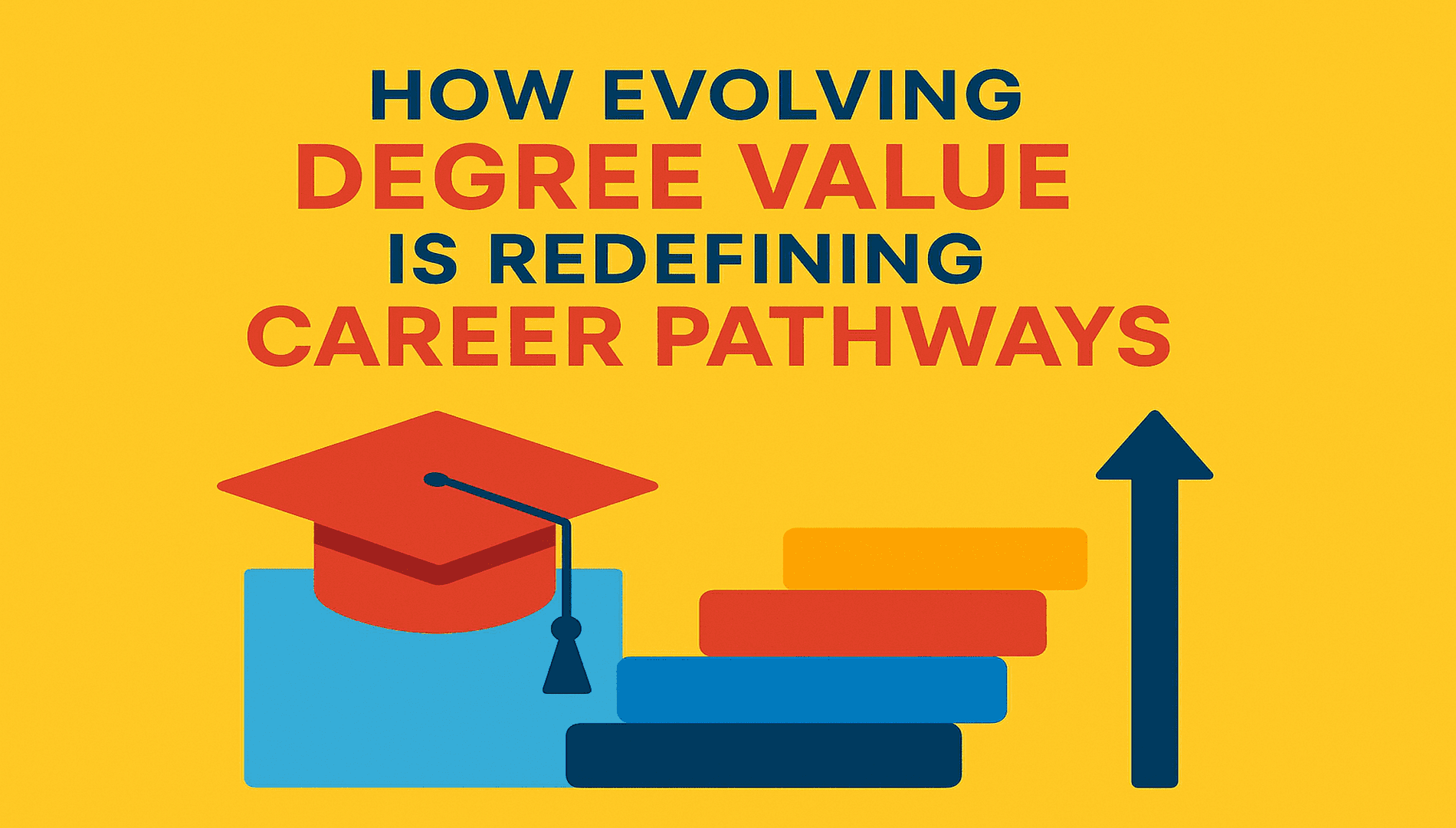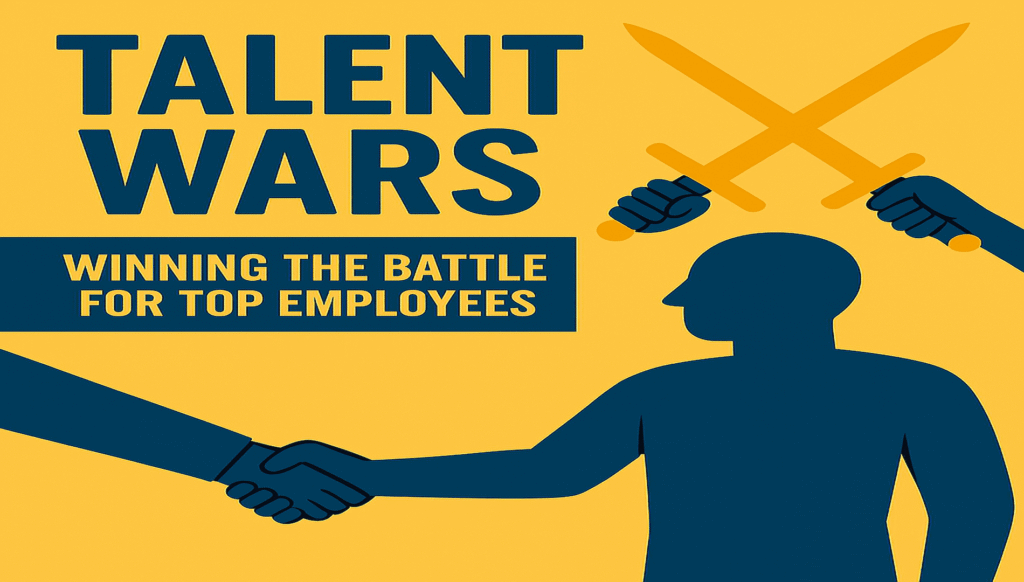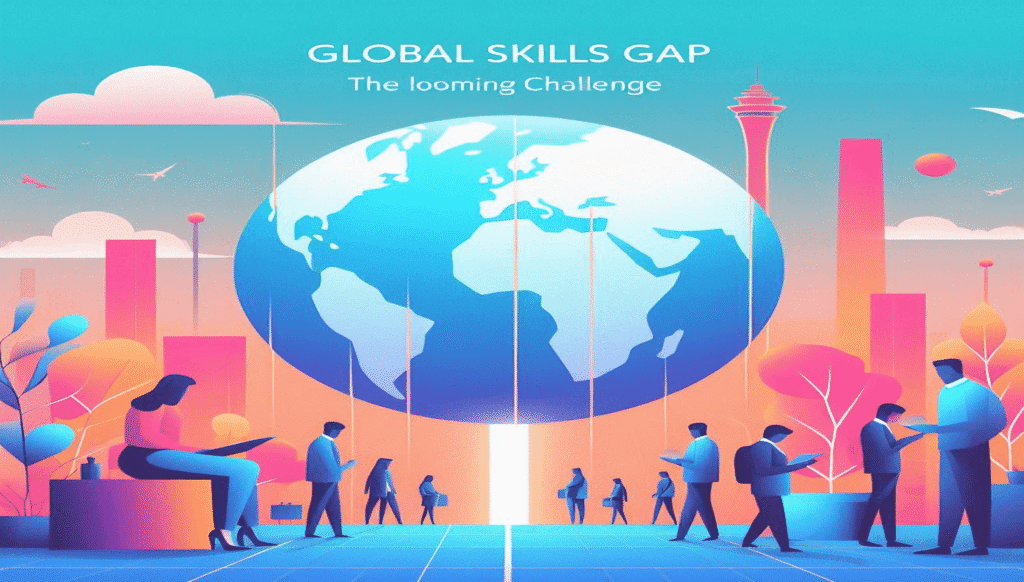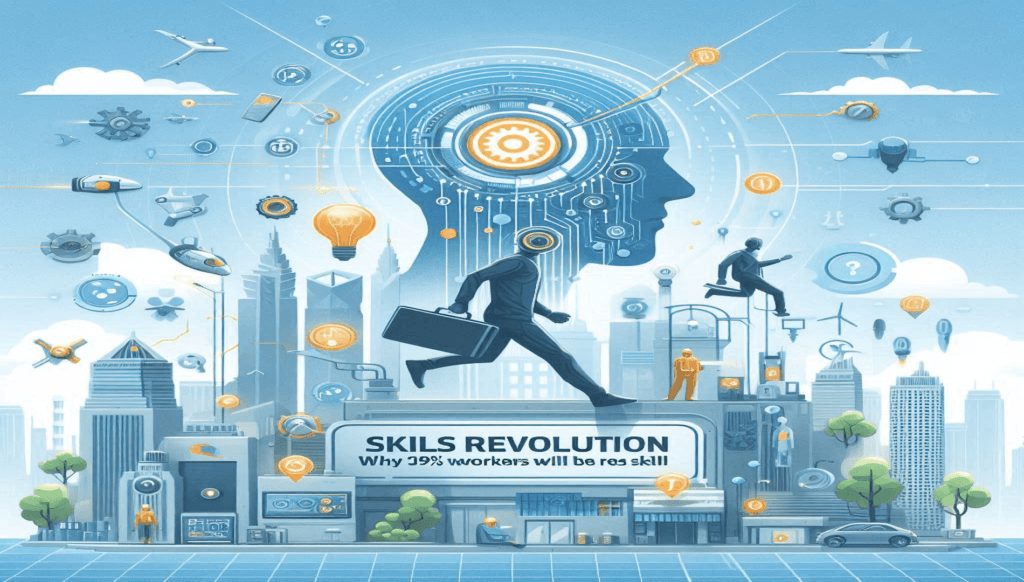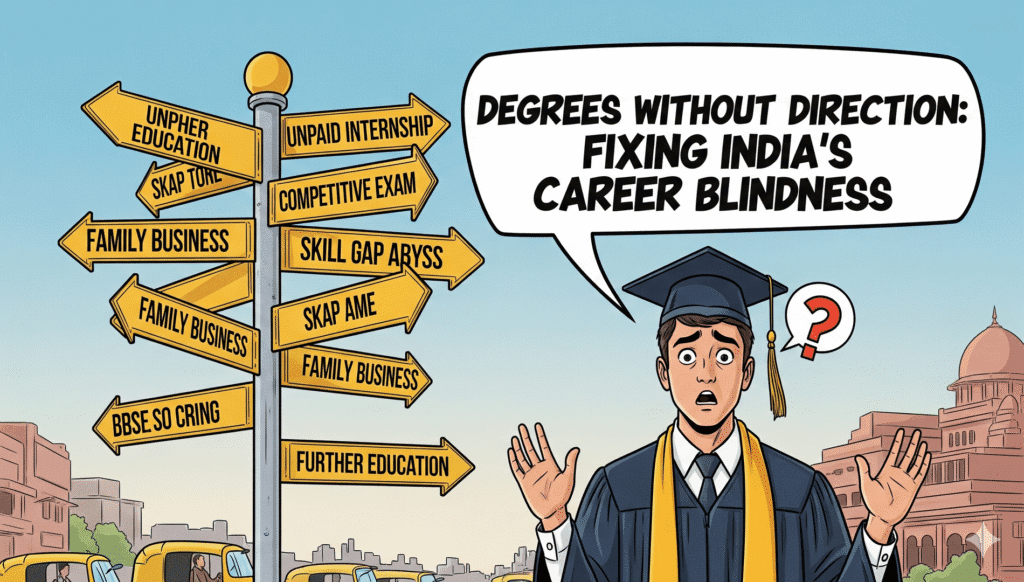
India’s demographic dividend is often hailed as its greatest asset: a young, ambitious workforce poised to power the next economic leap. But beneath the surface of rising college enrollments and tech-savvy youth lies a quiet catastrophe. The vast majority of students—90%, to be exact—are choosing careers blindly. Not by design. By accident. The India Career Guidance Crisis is real—and it’s quietly sabotaging the country’s demographic dividend.
The 90% Drift: How the India Career Guidance Crisis Begins
Ask any working professional in India, “Are you doing what you once dreamed of?” Most hesitate. Many say no. That’s the first symptom of the India Career Guidance Crisis. The disconnect isn’t due to lack of opportunity—it’s a failure of direction. Career guidance in India is still seen as a luxury, not a necessity. A United Nations study confirms this: only 10% of students receive expert career advice or even know it exists.
The rest? They drift—nudged by family pressure, social inertia, and outdated notions of “safe” jobs. In my opinion, allowing the foundation of our economic future to operate with such a massive information deficit is not just negligent. It’s economically reckless.
Misguided by Design: The Scale of India’s Career Guidance Crisis
India has the world’s largest youth population and one of the biggest education systems. Yet career counselling is treated as an afterthought. When 9 out of 10 students rely on anecdotal advice—from cousins, relatives, or the neighbourhood uncle—the results are predictably flawed.
| Source of Advice | Percentage of Students |
| Family/Friends | 90% |
| Professional Counsellors | 10% |
Sources of Career Advice Among Indian Students
Students choose familiarity over fit. They pick what they’ve heard of—not what suits their aptitude or personality. As Yasir Ali, director at YAC Edtech, notes, when structured guidance is absent, decisions default to limited, often misleading information.
The crisis runs deeper. Eight in ten students struggle to choose careers because they lack clarity on options, institutional quality, and prospects. Only 10% know the actual cost of the courses they enrol in. That’s not just an information gap—it’s a trap.
Private Schools, Same Problem: India Career Guidance Crisis Spares No One
A UN survey of 21,239 students across Classes 9 to 12 in seven states revealed a counterintuitive truth: private school students are more uncertain about their future than their government school peers.
| School Type | Unsure About Career Path |
| Private Schools | 41% |
| Government Schools | 35% |
Student Uncertainty by School Type
Even where counselling exists, it’s often unstructured or ineffective. The India Career Guidance Crisis is systemic—cutting across income levels, geographies, and school types.
The Economic Fallout: Degrees Wasted, Decades Lost
Career misalignment doesn’t end at graduation. It follows students into the workforce, where they land in roles they never wanted—working not from passion, but from fear of unemployment.
According to Gallup’s 2024 Global Workplace Report, only 14% of Indian employees say they’re thriving. The global average? 34%. That gap is a direct result of the India Career Guidance Crisis. When jobs are chosen under pressure, productivity suffers. So does mental health.
In my assessment, these aren’t just wasted degrees. They’re wasted decades.
Misalignment Starts Early—and Ends in Burnout
India’s employability crisis is well-documented. The India Skills Report and NASSCOM studies consistently show that nearly half of graduates aren’t job-ready. In engineering, only 20–25% meet industry standards.
Why? Because many students never wanted to be engineers in the first place. They chose the field under pressure, not passion. By the time they realise the mismatch, they’re years deep into a discipline they dislike.
The India Career Guidance Crisis starts early—and ends in burnout.. Surveys show that professionals unhappy with their career paths are more likely to experience chronic stress. The friction of being in the wrong role wears them down.
Institutional Gaps: Why Guidance Is Still a Luxury
The infrastructure for career guidance is appalling. Most government schools don’t offer it. Private schools treat it as a premium add-on. The student-to-counsellor ratio is often in the thousands—or worse, nonexistent.
When guidance is tacked onto a teacher’s already overloaded schedule, it becomes a ritual, not a resource. As Gaurav Tyagi of Career Xpert puts it, true guidance means helping students appreciate their aptitudes and explore diverse paths. That’s not happening. The India Career Guidance Crisis is institutional.
Cultural Inertia: The 1980s Template Still Rules
The deeper challenge is cultural. Many Indian parents still push the “holy trinity” of engineering, medicine, and civil services—viewing the economy of 2025 through the lens of 1980.
Family conversations rarely touch on AI, renewable energy, design thinking, or climate tech. These are the growth sectors of the global economy. Yet they remain invisible to students making life-altering decisions. Outdated mindsets fuel the India Career Guidance Crisis.
I believe this mindset must be dismantled. In countries like the UK, Canada, and Australia, students undergo formal grooming, career fairs, and aptitude tests before choosing university courses. India must follow suit.
The Path Forward: Policy Reform Meets Tech Innovation
The question isn’t whether India can afford career guidance. It’s whether it can afford to ignore it.
The National Education Policy (NEP) 2020 offers a starting point. Its emphasis on vocational and multidisciplinary education is promising. But policy alone won’t solve the India Career Guidance Crisis. Implementation must be deliberate and bold.
Leaders Must Prioritise Three Actions:
- Counsellors in Every School: Fix the student-to-counsellor ratio. Make guidance a core function, not a side task.
- Early Aptitude Mapping: Begin in primary school. Waiting until Class 12 is too late.
- Designed Internships: Embed real-world exposure into the curriculum. Let students experience industries before committing.
Career exploration must become part of everyday learning—not a once-a-year workshop.
Tech as Equaliser: Digital Solutions to the India Career Guidance Crisis
India’s scale and diversity make traditional counselling impractical. But AI-enabled platforms and mobile apps in local languages can democratize access.
As Yasir Ali suggests, these tools can deliver aptitude tests, career updates, and guidance—even to students in remote villages. In my view, tech is the key to solving the India Career Guidance Crisis. A student in rural Bihar deserves the same clarity as one in urban Mumbai.
Technology can also end the information blackout—providing transparency on course costs, institutional quality, and job prospects.
The Call to Action: Structured Direction Is Non-Negotiable
When only 10% of students know what they want to pursue, the India Career Guidance Crisis becomes a productivity crisis. Career guidance must be treated as essential, as critical as math or science.
Boards like CBSE must collaborate with state systems to embed guidance into the curriculum. The goal is simple: move from careers chosen by pressure to careers chosen by fit.
We must retire the 1980s template. We must empower students to explore future-focused sectors. If we don’t, we condemn another generation to burnout and wasted potential.
Here’s What I Think
The India Career Guidance Crisis is a failure of imagination and investment. We’ve subsidised college seats while ignoring the compass that guides students into them. If 90% drift and only 14% thrive, we’re not just facing a labour shortage—we’re eroding our national mental capital.
I believe the policy debate is too timid. Career counselling must become a mandatory prerequisite for higher education.
The National Grooming Certificate (NGC): A Bold Solution to the India Career Guidance Crisis
India should immediately implement a National Grooming Certificate (NGC), modelled on systems in the UK and Canada.
NGC Requirements:
- Aptitude Mapping Clearance: Standardised tests via AI-enabled platforms in local languages.
- Sectoral Exposure: Two mandatory, credit-bearing internships aligned with NEP 2020.
- Information Literacy Assessment: Proof of understanding course costs, job prospects, and required skills.
No student should enter a degree program without this certificate.
Financing Reform:
Tie funding for career counsellors directly to school accreditation. Move from a 1:1000 ratio to 1:500. Respect guidance the way we respect science.
Cultural Shift:
Fund awareness campaigns about emerging fields—AI, climate tech, and sustainable development. Challenge the parental bias toward outdated professions.
India must treat the India Career Guidance Crisis as a national security issue—not an educational elective. The cost of continued blindness is too high. The time for drift is over. Let’s build a future defined by informed intent.

Ajay Dhage is a seasoned Talent Acquisition leader with over 20 years of experience in recruitment and workforce strategy. Currently serving as the Talent Acquisition Lead for a global Oil & Gas EPC Company in India, ajay oversees the entire talent acquisition lifecycle across diverse and complex projects, from sourcing to onboarding and aligning top talent with complex organizational goals. With a proven track record in industries such as oil and gas, EPC, and renewables, he brings a customer-focused approach and innovative mindset to every project.
Through ajayable.com, ajay aims to share insights, trends, and strategies to empower HR professionals, Organizations and recruiters to excel in a competitive talent landscape.
